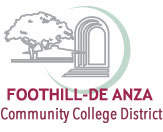Sunapsis Project Meeting Minutes
Conference call with Matt Reynolds
August 18, 2015 11:00 a.m.-noon
Attendees: Matt Reynolds remotely, Chien Shih, Mahmood Hasan, Jim Clow, Ryan Anthony, Katia Rostam-Yazdi, Linda Koyama
- Purpose of the meeting is to assess the project scope, to get a feel of where we are
and a road map to get to end-to-end pilot testing.
- Matt showed us the project check list that needs to be kept up-to-date in order for him to determine whether we are ready for the site visit. He asked that we check off the items that we are certain to have been completed; mark with "draft" icon if it is in progress. The link can be found at:
https://istart.iu.edu/istart/controllers/Community/CommunityEngine.cfm?id=330fe29d3da1a1a979f6764f5089b1d9&campus=sunapsis and select the "upgrade/installation procedure" and then select the last option "Sunapsis IOM Initial Installation".
- Hasan brought Matt up to date regarding where we are with the infrastructure set up;
we will update the check list.
- Matt e-mailed a tentative site visit agenda to Sherri, Chien and Jerrick.
- Timeline: 6-8 months from the initial implementation call. Completing the application
configuration ties our institution specific data to Sunapsis so it can interpret all
of our values coming in from the data feeds such as term codes, campuses, SEVIS specific
configuration, alert groups, setting up e-mails and automation rules.
- Incorporating all the Sunapsis features at the same time is very difficult to implement
this way. What Matt would suggest is to make sure the system can interpret your data
feed values, making sure you can communicate with SEVIS system via batch and RTI,
and setting up your initial campus terms and alerts configurations so that you can
be alerted when your data feed changes or if there is a SEVIS problem you need to
be aware of, be able to track enrollment and any institution specific data issues
like passport info and notes. Matt suggested to think less now about the process
and more about getting the software stable in terms of configurations, using the check
list and technical guide as a model.
- Chien reiterated that there are basically three component parts that need to be completed:
- Have the platform ready
- Technical system configuration including SEVIS setup, e-mail, and peripheral connections need to be in place
- Work on process (workflow, e-forms)
- Matt suggested to not concentrate on the e-forms process right now; instead, primarily
think about making sure the system is operating properly in terms of your institutional
data and that it can communicate and maintain compliance and synchronization with
SEVIS.
- We will have a test environment soon. Matt has a Script to delete any fabricated
test data.
- Matt suggested that we first make sure that we can send in data for our entire population
of internationals and that we can make an I-20 and see alerts in the tree for data
related issues, i.e. missing e-mail.
- Matt suggested that we start testing as soon as possible for things that are already
configured. If you have the SEVIS batch certificate in place and you are able to batch
into the SEVIS system with your school codes, you can begin testing. Any problems
can be addressed with Sunapsis support. It needs to be a stable environment.
- Purpose of visit: Provide training on day-to-day operations on how to report to SEVIS
to keep the data synchronized and to perform the SEVIS to Sunapsis synchronization
process. They are not here to certify our process, or applicant pool.
- Fine tuning of the front end data load will need to be done to be acceptable for SEVIS.
- Prior to Matt's visit we need to:
- Batch feed test student data into Sunapsis to set up a proper alert and SEVIS configuration.
- Turn on the front end data feed matching the batch load format
- Internal process with e-forms
- In addition, we need to have:
- A working data feed
- SEVIS communications working to the SEVIS test system
- All the scheduled tasks in the Coldfusion setup completed to handle alerts generated in the system
- Front facing website for students to get documents to us
- Matt can view our checklist. Everything needs to be done through #3. Matt will
contact us as the site visit date gets closer to confirm in order to book travel.
- Matt can move the feed from SEVIS test to production before he leaves.
- System Mappings very important if different from what Sunapsis is expecting. Table
set up must be in place for the alerts to be working properly.
- Indiana University is a Peoplesoft school so many of the codes are based on a Peoplesoft model.
- Majors need to match SEVIS CIP code.
- Before we can have a successful data conversion from SEVIS, before Sunapsis can scrape
all the data from SEVIS, we need to have a pairing of the university id number and
SEVIS id number for all academic students in a spreadsheet. We need to check if off
when completed under section 3, "Preparation for SEVIS data conversion" as soon as
possible.
- Core configuration, SEVIS configuration, and institutional code and mapping also needs
to be completed in order to have a successful site visit.
- List of clients on Sunapsis website, probably half are Banner schools. (UC Davis, Loyola Marymount) Sherri can e-mail the client list.
